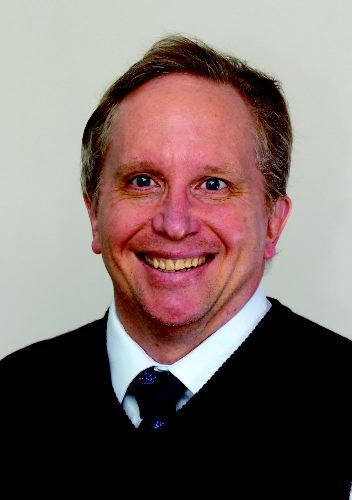The B.C. Coroners Service did the right thing by relenting to pressure from the friends and family of Robert Luggi and Carl Charlie - the two men who died in the Babine sawmill explosion three-and-a-half years ago - to hold a separate inquest into the disaster.
The original plan was to hold a single inquest into both the Babine disaster and the similar, dust-fueled explosion that leveled Lakelands Mills in Prince George. But those affected by the Babine incident complained Prince George was simply too far away - it's a two-and-a-half-hour drive between communities - and chief coroner Lisa Lapointe agreed.
It has proven to be the correct decision in more ways than one.
Even as it stood, the inquest into the Lakeland tragedy took four-and-a-half weeks to complete, and that's not counting the month-long break to give the coroner's counsel time to review new evidence in the form of an investigation carried out on behalf of the mill's owners. The circumstances surrounding Lakeland were already complex enough without the jury, which was reduced from seven people to five over the course of the proceedings, also having to consider evidence related to the Babine disaster.
There was a very strong risk that one of the two - likely Babine - would have become an afterthought if the coroner's office continued with its original plan.
But more importantly, some significantly different issues have been raised so far at the Babine inquest, which began last Monday and is scheduled to run for about two-and-a-half weeks before the jury begins deliberations.
For one, the extreme cold that caused such difficulty in terms of keeping the mill operating has becoming a running theme. No evidence of similar trouble was ever raised during the inquest for Lakeland, which blew up three months after Babine was destroyed.
For another, the decision at Babine to do away with a "spark watch" and instead use a "buddy system," in which one millwright is supposed to keep an eye out for sparks from so-called "hot work" like welding that the other millwright is performing, has been roundly criticized.
In other words, the jury has been given some grist it can turn into some markedly different recommendations than the one for the Lakeland inquest developed.
So far, at least, no concerns have been raised about a lack of joint health and safety committee meetings at Babine. At Lakeland, exploring the lack of those meetings took up much of the inquest's time. Of course, some familiar themes have also emerged.
Like the employees who testified at the Lakeland inquest, those at the Babine inquest were critical of efforts to deal with the fine, powdery sawdust that came with processing beetle-killed pine.
As the price of lumber took a dive, the owners at both mills made changes to shifts to allow the machinery to run for longer periods during the week, meaning there was less time for clean-up and maintenance.
The mantra that everyone knew the dust posed a fire hazard but, in such open spaces at least, no one knew it could provide the fuel for a full-on explosion, has started to emerge at Babine just like it was an ongoing phrase at Lakeland.
There has been some grousing that the Babine inquest was not held first given that the disaster occurred before Lakeland's.
But so far being held second has been a blessing in disguise.
Chico Newell, the presiding coroner at the Babine inquest, sat through the entire Lakeland inquest in a supporting role and witnessed the problems Lapointe had to confront while trying to keep a highly-charged proceeding on track.
Apparently learning some lessons from Lakeland, Newell has done an exemplary job of keeping counsel focused on the task at hand and simply setting the right tone from the outset. (That said, it should be no surprise given he did as much during another emotional inquest into the shooting of Greg Matters by the RCMP, also held in Prince George.)
Interestingly, the order of witnesses has differed from Lakeland. Whereas they weren't on until well into the proceeding in Prince George, Amy Cronin, a U.S.-based expert on dust explosions, and Paul Orr, who led WorkSafeBC's investigations into both explosions, were the third and fourth witnesses to testify at Babine.
It could have been a simple matter of scheduling them when they were available, but putting them on near the start has gone a long way to establishing the causes behind the blast at Babine and set the jury to start thinking early about how to prevent a similar incident in the future.
Also interesting is that the order in which counsel can ask questions has been changed. Whereas at the previous inquest, WorkSafeBC followed the coroner's counsel, the United Steelworkers lawyer is now second in line.
Hopefully, the change will be enough to convince the union to stick around for the entire inquest after withdrawing part-way through the Lakeland proceeding because USW counsel Craig Bavis has pursued some valid lines of questioning.
Of course, as was the case with Lakeland, the Babine inquest will still fall short of meeting the demands for "justice and accountability" that the victims' families have been raising.
But at least after the first week, they haven't been subjected to the sometimes circus-like atmosphere that settled on the Lakeland inquest and it looks like the Babine inquest is on the way to producing some effective recommendations for preventing similar incidents in the future.
Editor's note: Mark Nielsen will be back in Burns Lake Wednesday to report on the inquest for The Citizen. Steve Zika, CEO of Hampton Affiliates, the Oregon-based owner of Babine Forest Products, is on the list to testify that day.



